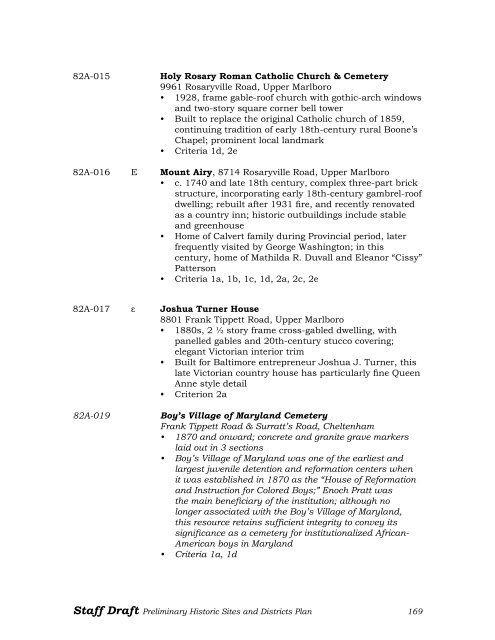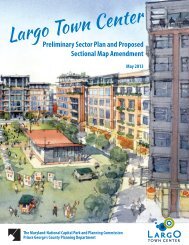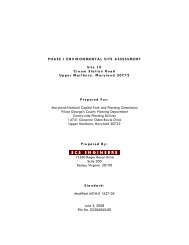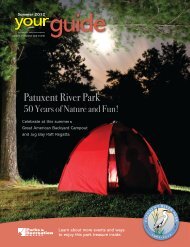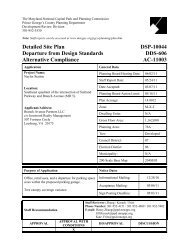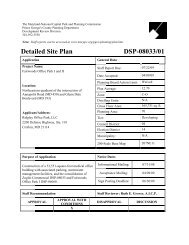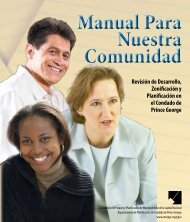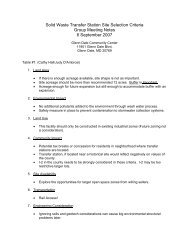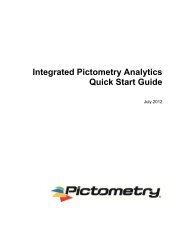PART II: Chapter 16 Historic Sites and Proposed Historic Sites
PART II: Chapter 16 Historic Sites and Proposed Historic Sites
PART II: Chapter 16 Historic Sites and Proposed Historic Sites
Create successful ePaper yourself
Turn your PDF publications into a flip-book with our unique Google optimized e-Paper software.
82A-015 Holy Rosary Roman Catholic Church & Cemetery9961 Rosaryville Road, Upper Marlboro• 1928, frame gable-roof church with gothic-arch windows<strong>and</strong> two-story square corner bell tower• Built to replace the original Catholic church of 1859,continuing tradition of early 18th-century rural Boone’sChapel; prominent local l<strong>and</strong>mark• Criteria 1d, 2e82A-0<strong>16</strong> E Mount Airy, 8714 Rosaryville Road, Upper Marlboro• c. 1740 <strong>and</strong> late 18th century, complex three-part brickstructure, incorporating early 18th-century gambrel-roofdwelling; rebuilt after 1931 fire, <strong>and</strong> recently renovatedas a country inn; historic outbuildings include stable<strong>and</strong> greenhouse• Home of Calvert family during Provincial period, laterfrequently visited by George Washington; in thiscentury, home of Mathilda R. Duvall <strong>and</strong> Eleanor “Cissy”Patterson• Criteria 1a, 1b, 1c, 1d, 2a, 2c, 2e82A-017 ε Joshua Turner House8801 Frank Tippett Road, Upper Marlboro• 1880s, 2 ½ story frame cross-gabled dwelling, withpanelled gables <strong>and</strong> 20th-century stucco covering;elegant Victorian interior trim• Built for Baltimore entrepreneur Joshua J. Turner, thislate Victorian country house has particularly fine QueenAnne style detail• Criterion 2a82A-019 Boy’s Village of Maryl<strong>and</strong> CemeteryFrank Tippett Road & Surratt’s Road, Cheltenham• 1870 <strong>and</strong> onward; concrete <strong>and</strong> granite grave markerslaid out in 3 sections• Boy’s Village of Maryl<strong>and</strong> was one of the earliest <strong>and</strong>largest juvenile detention <strong>and</strong> reformation centers whenit was established in 1870 as the “House of Reformation<strong>and</strong> Instruction for Colored Boys;” Enoch Pratt wasthe main beneficiary of the institution; although nolonger associated with the Boy’s Village of Maryl<strong>and</strong>,this resource retains sufficient integrity to convey itssignificance as a cemetery for institutionalized African-American boys in Maryl<strong>and</strong>• Criteria 1a, 1dStaff Draft Preliminary <strong>Historic</strong> <strong>Sites</strong> <strong>and</strong> Districts Plan <strong>16</strong>9


